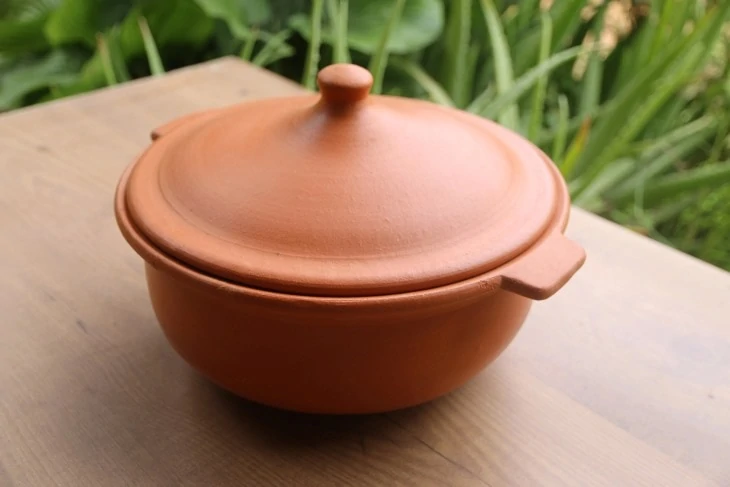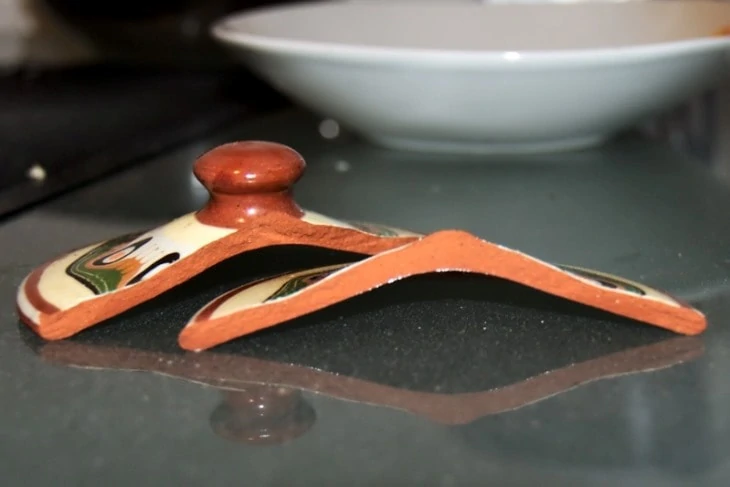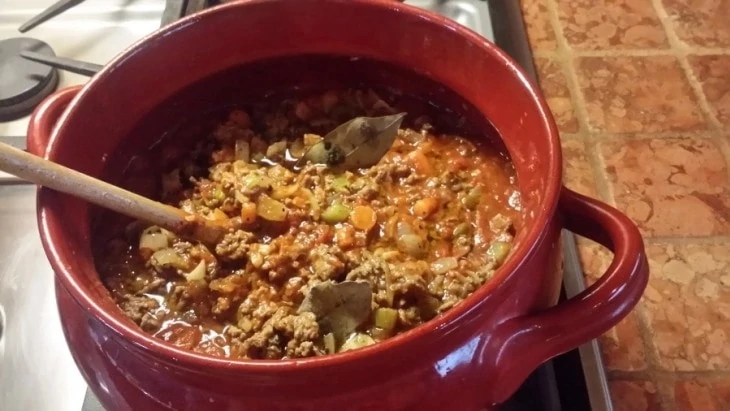Cooking trends come and go. Clay pots have been around for a long time, but they have become trendy for cooking once again. What are the disadvantages of cooking with a clay pot? Are they safe to use? What are the advantages? Read this before you invest in clay cookware!
Clay pots have been used for cooking for centuries. They are all natural, environmentally friendly, and cook food evenly without a lot of added fat. However, they have some disadvantages, including the possible presence of toxins, their porous nature, fragility, and high price. Clay pots are also prone to cracks if not handled with care. They need to be seasoned before use and cleaned carefully.
Table of Contents
What is a Clay Pot?

A clay pot is a cooking pot that is made from clay or earthenware. They are considered to be natural and have many health advantages. Clay pots usually have a lid, and come in many shapes and sizes. They all have the same purpose: cooking food.
What Are the Disadvantages of Cooking in Clay Pots?
Most cooking sites will sing the praises of clay cookware, but there are disadvantages to cooking with clay pots. It’s important to evaluate all sides before you decide if clay pots are the right cookware for you.
1. Impurities in the Clay
Unfortunately, environmental toxins can sneak into the clay before the pots are made, or during the manufacturing process. Pure clay is usually safe, but even cookware that is advertised as safe can contain impurities. It is important to buy clay cookware from a reputable brand to make sure that it is really free from impurities.
Some of the impurities that can be found in clay pots include metal fragments, iron oxide, and other impurities. Glazed clay pots can sometimes have lead in the glaze.
2. Porous Nature of Clay Pots
Because clay is a porous material, it is very absorbent. If the clay is washed with soap, your food may taste like soap afterwards. Sometimes the pores can slow down cooking by allowing the steam to escape.
3. Clay Absorbs Strong Flavors
Because the clay is porous, it will also absorb any strong flavor used in cooking. Do you make a lot of curry? Everything you cook in that clay pot may end up tasting like curry! If you cook with a lot of strong spice, the pores of the clay pot will hang onto those flavors.
Some clay pot enthusiasts have different pots for different types of flavors. For example, they will keep one pot free from strong spices for rice or sweet dishes and another pot for cooking spicy dishes.
4. Clay Pots Are Fragile

Clay can break easily if it is not handled with care. It becomes even more prone to breakage when it is heated and cooled. If the heating or cooling process occurs too quickly, the pot is even more fragile.
5. Clay Pots Crack Easily
There are very specific guidelines to use when cooking with earthenware to avoid cracking. Sudden changes in temperature or temperatures that are too high can cause cracks.
Clay pots should never be heated while empty. At the very least, place a small amount of liquid in the bottom of the pot. Also, once a clay pot is warmed up, it should not be placed on a cool surface or submerged in cool water.
6. They Pose a Burn Risk
The clay can become very hot, and the pots can be difficult to handle. Many cooks have reported burns while cooking with clay cookware.
7. Clay Pots Can Be Expensive
If you are on a budget, cooking with clay may not be the best option! A quality clay pot from a reputable brand can cost you. R&M International, Swadeshi, and Romertopf are considered to be some of the best brands of earthen cookware.
8. Cooking in Clay Pots is Slow
Clay pots cook the food with low heat and steam. This is a process that can’t be rushed.
9. Cleaning Clay Pots is Tricky
Clay cookware should never be cleaned with soap. They also are not dishwasher safe. It is important to not use water that is too hot or too cold with your clay pot, or it could crack.
The best cleaning method is warm water and a scrubber. If there are particularly tough stains to deal with, add 1-2 tablespoons of baking soda, 1-2 tablespoons of vinegar, and some water to the pot. Allow it to soak overnight, then thoroughly rinse the pot until it is clean.
10. Clay Pots Must Be Seasoned Before Use
A clay pot cannot be used for cooking until it has been properly prepared and seasoned. In this case, seasoning does not refer to salt and pepper. Seasoning is the process by which the clay is oiled so that the food doesn’t stick to it during cooking.
To season a clay pot, thoroughly rub down the inside of the pot with vegetable or olive oil. Fill the pot ¾ of the way to the top with water and place the lid on securely. Place the pot in a cool oven, then turn the oven to 350 degrees Fahrenheit. Bake for three hours. Turn off the oven and leave the pot inside until it has cooled. Drain and dry the pot. Your clay pot is seasoned and ready for use!
What Are the Advantages of Cooking in Clay Pots?
In spite of all the disadvantages to clay pots, there is a reason they are popular with some cooks. Many clay pot enthusiasts claim that clay pots deliver superior cooking and flavor to many dishes.
1. Slow, Even Cooking
Clay pots are porous and distribute the heat evenly throughout the dish. The result of the circulating heat is evenly cooked food. Slow cooking allows the food to cook all the way through, with no burnt or undercooked portions.
2. Less Oil is Needed
Because the food is trapped in the pot with steam, it stays moist without the use of extra oil. If a pot is properly seasoned, the food should not stick to the pot during cooking. This may be helpful for people who are watching their fat intake or cholesterol levels.
3. The Food’s Nutrients Are Retained
Clay pots are equipped with a lid. As the food cooks, the steam and nutrients are trapped in the pot, rather than escaping into the air. The result is food that is juicy and full of nutritional value.
4. Clay is Environmentally Friendly
Clay is all-natural, inert, and nontoxic. If environmentally-friendly materials are important to you, clay is a great way to go.
5. Clay Neutralizes the pH of Food
Clay has alkaline properties. These properties interact with the acidity in the food, creating a neutralized pH. You may notice that acidic foods, such as tomatoes, become sweeter tasting in a clay pot.
What Can You Cook in a Clay Pot?

- Many cultures traditionally cook stews in a clay pot. Even cooking makes the meat and vegetables tender.
- Baked pasta dishes – Pasta will cook evenly, and maintain flavor.
- Traditional bread dough cooks well in clay.
- Puddings or other pudding-type desserts – Pudding stays moist and cooks evenly.
- Vegetable dishes – Vegetables retain all their moisture and nutritional value when cooked in a clay pot.
- Casseroles – Cook a casserole in a clay pot for a moist dish with no burnt edges.
- Rice, or rice pudding retains its moisture when cooked in a clay pot.
- A simple dish like baked potatoes works well in a clay pot because of the even heat distribution. There are many ways to prepare potatoes in a clay cookware.
- And, many more possibilities!
What Are the Different Types of Clay Pots?

There are many different types of clay pots available. Here are a few of the most popular types:
- Earthenware – These are the true clay pots that usually come to mind. They are made of a soft, porous, unglazed material that does not hold up to high temperatures. They are made of all natural materials and cook food evenly over low heat without the need for added oil.
- Stoneware – Stoneware is a more durable material that is able to withstand high heat. It is resistant to cracks and breakage. It retains heat well.
- Porcelain Cookware – This one is the most durable of these three varieties. It is microwave safe and flameproof. Porcelain is typically painted or glazed, and, as a result, may contain toxic substances. This paint may get into food and make it unsafe to eat. Porcelain does not retain heat as well as earthenware or stoneware.
Final Thoughts
Clay pot cooking may be an ancient practice, but it isn’t for everyone! Cooking with clay cookware can be time-consuming, risky, and expensive. Evaluate the disadvantages and advantages before deciding if clay pot cooking is right for you.

